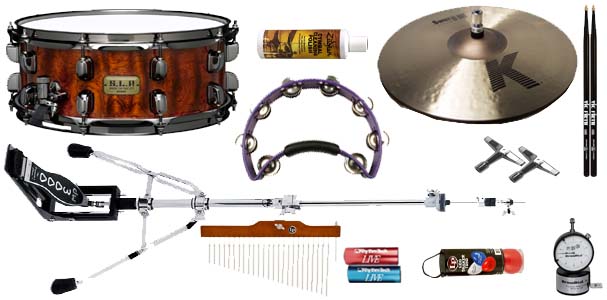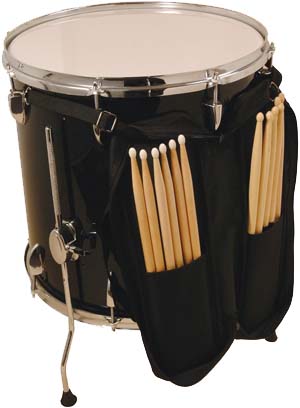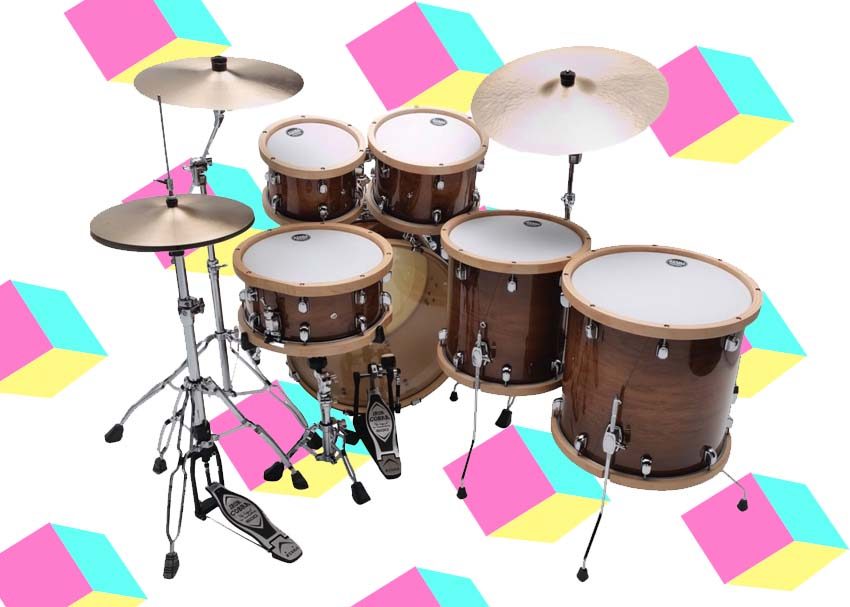Here at zZounds we’ve covered what it takes to prepare for your next recording session. But we need to get specific on the real backbone of the band’s recording session, the drums. The percussive rhythms coming from behind the lead singer are extremely important in not only keeping time, but emoting the overall feel and pacing of a track. Thus, these instruments should be treated with respect and proper preparation when headed into the live room. After writing, rehearsing and possibly playing out live the songs you intend to record, they can finally be ready for the studio recording treatment. Be it a one-off single, EP or full-length LP, the process of recording an instrument is an experience that every musician needs to be fully prepared for, and especially the drummer.
Clean Those Drums
Being percussive in nature, drums take a beating day in and day out. This leads to degradation of the heads, and in some cases, the actual shells and hardware. This is why it is of the utmost importance to start studio preparation with regular drum maintenance. You can absolutely procrastinate on this step until the day before recording, but keeping your kit in tip-top shape doesn’t take a lot of effort at all and can be done little by little each time you rehearse.
This starts at the most basic: keep the drum kit clean. From stick fragments to dust, drum kits are all eventually completely covered in both human and former tree DNA. These fragments over time can deaden heads by sneaking into the area between your hoops and the bearing edge of the drum. It may be a minor problem, but a simple wipe down with an instrument cloth or some compressed air can do wonders for resonance on a long-neglected drum.
Getting into a more involved process, taking the heads off the kit can open up your eyes to some potential “problem areas.” This is also a great time to replace your drum heads for recording — a fresh skin will bring back a lot of resonance to your drums and update the sonic profile of the kit. Once the heads are off, you’ll be able to reach screws that hold the lugs on the drum. These can often become loose, causing rattle that gets picked up by studio microphones. Simply tighten these up and you’ll avoid the “mystery noise” that takes hours to track down in a studio setting.
 Technique and Tone
Technique and Tone
“Tone starts in the fingers” is often said by guitar players who’ve probably never played with an Earthquaker Rainbow Machine before, but in the realm of drums this actually rings pretty true. When behind the kit, it’s all on you, the drummer, to hold it down on the rhythmic side. You need to have technique, proper drum tuning and — most importantly — the songs down.
Getting into a routine of practicing with a click track or metronome can bring your drumming consistency to the next level. Knowing how to play with the song you’ve written is equally important, though — and sometimes a track calls for playing behind or ahead of the beat. All of these techniques begin by practicing your compositions with a metronome. Your engineer and producer will bow at your feet if you blast through the first track with consistent drum hits and tempo discipline.
This leads into tuning your drums. The best technique in the world can’t always save the listener from a horribly tuned snare drum, but tuning it can! If you’ve never tuned a drum before, don’t worry — there are hundreds of tutorial videos online as well as drum-bag-worthy items like the DrumDial precision drum tuner that make tuning each drum incredibly easy. Just start with a drum sound you enjoy and go from there — slight tweaks can be made after you find a “home” for your drum’s tone.
Bring What’s Needed
The drum bag is a drummer’s palette for their tone-coloring tools of the trade. When heading into the recording studio, this should be filled with items that will be used in creating the record, or as backups for the workhorse pieces that are mandatory for your sound. It’s important not to overload your bag, as too many options can often lead to the canceling out of good intentions, leaving you with a tone you’re either unhappy or undecided with. Discipline is key in knowing what will be coming with you on your tone-sculpting journey.
Starting with sticks, most modern sounds can be performed live with one type of drumstick and this is based on your personal preference of size, shape, etc. But in the studio, other stick types can be explored for additional tonal options. This includes mallets for cymbal swells or warm tom hits, brushes for that signature buzz, multi-rod sticks for a softer crack and any other accessory that expands your timbre options.
Alt-percussion is the unsung hero of modern music. From tambourines and shakers, to sleigh bells and chimes, alternative percussion instruments provide an undeniable ambiance to your overall track. Creating demos beforehand and throwing in an auxiliary percussion track or two is a great way to A/B different options to try in-studio. Most recording studios worth their salt will have a high-quality tambourine and shaker, but it typically ends there. So keeping alt-percussion in mind from the get-go can save your groove in the long run.
Whether you’re just starting to write that next record, or your studio time is already booked and paid for, remember to take some time out of the rehearsal schedule to prepare for the best and plan for the worst when it comes to drum recording.




Leave a Reply